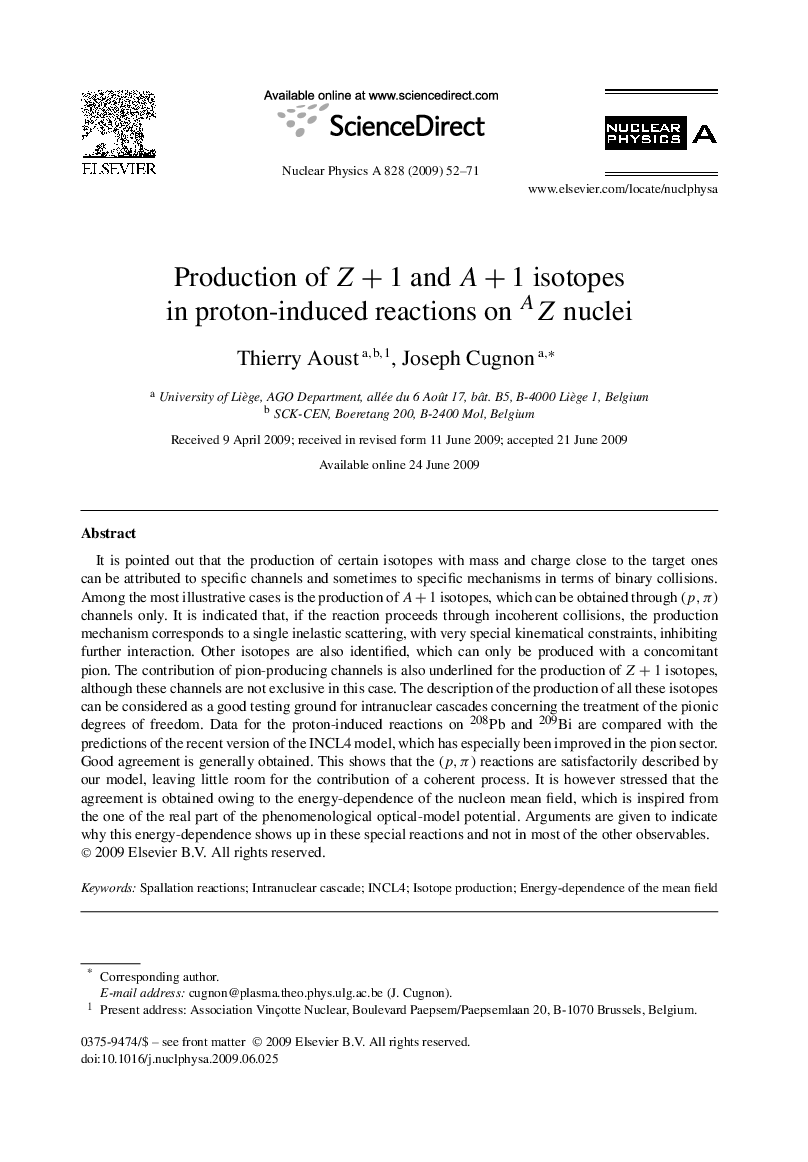| Article ID | Journal | Published Year | Pages | File Type |
|---|---|---|---|---|
| 1838694 | Nuclear Physics A | 2009 | 20 Pages |
It is pointed out that the production of certain isotopes with mass and charge close to the target ones can be attributed to specific channels and sometimes to specific mechanisms in terms of binary collisions. Among the most illustrative cases is the production of A+1 isotopes, which can be obtained through (p,π) channels only. It is indicated that, if the reaction proceeds through incoherent collisions, the production mechanism corresponds to a single inelastic scattering, with very special kinematical constraints, inhibiting further interaction. Other isotopes are also identified, which can only be produced with a concomitant pion. The contribution of pion-producing channels is also underlined for the production of Z+1 isotopes, although these channels are not exclusive in this case. The description of the production of all these isotopes can be considered as a good testing ground for intranuclear cascades concerning the treatment of the pionic degrees of freedom. Data for the proton-induced reactions on 208Pb and 209Bi are compared with the predictions of the recent version of the INCL4 model, which has especially been improved in the pion sector. Good agreement is generally obtained. This shows that the (p,π) reactions are satisfactorily described by our model, leaving little room for the contribution of a coherent process. It is however stressed that the agreement is obtained owing to the energy-dependence of the nucleon mean field, which is inspired from the one of the real part of the phenomenological optical-model potential. Arguments are given to indicate why this energy-dependence shows up in these special reactions and not in most of the other observables.
